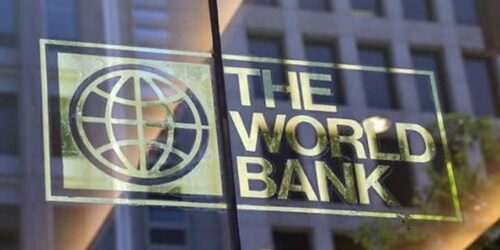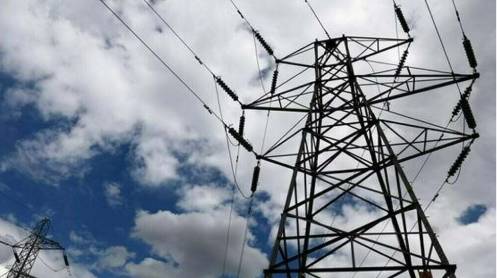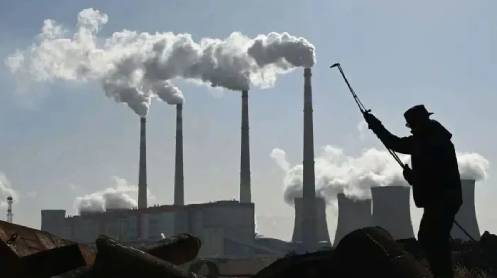While lowering down Pakistan’s GDP growth projection to 3.4 percent and keeping inflation at 9 percent for the current fiscal year, the World Bank has highlighted four major risks for Islamabad’s economy, including external pressures and increasing exposure to debt-related shocks.
This was highlighted in the World Bank’s ‘Pakistan Development Update: Reviving Exports’, launched here at the WB office here on Thursday. Pakistan has envisaged a GDP growth rate target of 4.8 percent for the current fiscal year. Interestingly, the WB has again projected a GDP growth rate of 3.5 percent for the last fiscal year 2020-21 despite the government’s released provisional figure of 3.9 percent, arguing that there were increased uncertainties because of the Covid-19 pandemic.
Secondly, the government should release quarterly GDP growth figures and when the finalized figures would be released, the WB would update its figures. For FY-22, the WB lowered the country’s GDP growth projection to 3.4 percent mainly because of tightening of fiscal and monetary policies, further increase in energy prices and increased vulnerabilities on external front would result into slowing down of the economic growth prospects.
The WB highlighted four major risks faced by Pakistan’s economy, including external pressures, another wave of Covid -19 pandemic, lackluster approach on revenue mobilization and further stalling of IMF program posed major risks to Pakistan’s economy. Despite easing, average headline inflation in Pakistan was substantially higher than in other countries in South Asia, with the regional average at 5.2 percent in FY21.
“Fiscal pressures are expected to remain elevated, especially with national elections on the horizon. Public debt will remain elevated in the medium-term, as well Pakistan’s exposure to debt-related shocks. This outlook assumes that the government continues to implement reforms agreed with the IMF under the EFF program.”
When journalists asked the WB’s Country Director Najy Benhassine about the statement of Adviser to PM on Finance Shaukat Tareen about the brunt faced by the country for getting $500 million installment and some of the conditions related to power sector attached with the WB loan, he refused to reply but said the burden of electricity tariff should be equally divided among all stakeholders, including consumers, power generation companies and reducing losses. He said that all those living below the poverty line in the range of 40 percent should be protected from the raise. There is a need to reduce the losses of the power sector that cannot be done overnight, he added.
To another query about the slowing down of disbursement under Pakistan Raises Revenues (PRR), the WB official replied that Technical Assistance of $80 million got delayed due to the approval process of PC-1 and it was hoped that the disbursement process would be accelerated in the coming six months. The WB’s Country Director said that the harmonization of entire country’s GST was one of the major objectives of the tax reform agenda. The WB has estimated that the country’s revenues could be increased by 1 percentage of GDP if the GST is fully harmonized for the whole country, he added.
The WB’s Pakistan Development Update (PDU) says that external pressures have recently increased notably. Compared to a surplus of USD0.8 billion in July-August 2020, the current account recorded a deficit of USD2.3 billion for the same period in 2021, largely due to strong domestic demand leading to a wider trade deficit. During this period, exports of goods and services increased by 33.6 percent year-to-year whereas total imports jumped by 62.2 percent. With limited external buffers and elevated financing needs, the rapidly growing imports and wider trade deficit have heightened external risks and resulted in pressures on the exchange rate and consequently reserves.
“The rupee has already depreciated by 8.1 percent against the US dollar since end-June 2021, and between mid-June to early September, the central bank used $1.2 billion in reserves to mitigate disorderly exchange rate adjustments,” the WB stated. Given that external public debt is a third of the total public debt stock, the depreciation of the currency has implications for public debt, which is already above 90 percent of GDP. The public debt to GDP ratio stands at 90.7 percent.
Moreover, critical structural reforms could be delayed by more contagious Covid -19 strains requiring widespread lockdowns, and a worsening of regional and domestic security conditions, including those stemming from the Afghanistan situation. These could pose additional downside risks to the outlook.
With elevated risks for fiscal and debt sustainability, fiscal consolidation efforts are necessary. Major downside risk to Pakistan’s macroeconomic outlook is a further delay or stalling of the IMF-EFF programme and the consequent external financing difficulties, such as access to international financial markets and the roll-over of bilateral debt from nontraditional donors. With elevated external financing needs over the medium term, Pakistan’s already limited reserves could come under additional pressure. Thus, a successful and timely conclusion of the sixth review of the IMF-EFF program, and implementation of critical structural reforms will strengthen Pakistan’s fiscal position in the medium-term and improve fiscal and debt sustainability. Critical reforms include those aimed at sustaining macroeconomic stability, domestic revenue mobilization, increasing competitiveness, and improving the financial viability of the energy sector.
Bolstered by the recovery in the industry and services sectors and resultant off-farm employment opportunities, poverty incidence, measured at the international poverty line of USD1.90 PPP (puchasing power parity) 2011 per day, is expected to have declined to 4.8 percent in FY21 from 5.3 percent in FY20. However, this change is not statistically significant, and downside risks arising from lockdown-induced disruptions to employment and high food inflation remain.
With the onset of the pandemic, over half of the working population faced either job or income losses associated with the widespread lockdown over April to June 2020, with 74 percent of affected workers belonging to the informal sector. As such, the most vulnerable segments of the labor force were the worst affected, with informal and low-skilled workers employed in elementary occupations facing the strongest contraction in income from labor markets. However, subsequent estimates indicate that the labor market had almost fully returned to its pre-lockdown levels by November 2020 (PBS, 2020), which is consistent with the estimated rebound in real GDP growth in FY21.
The government has been instituting various initiatives to increase the inflow of remittances through official channels. While external accounts report a significant increase in official inflows of remittances for FY21, household survey data show a different picture. Recipient households reported a 35 percent decline in the value of remittances received between the onset of the pandemic and November 2020. Therefore, it is likely that even as official remittances have risen, the overall value of remittances has actually gone down in line with the global recession and disruptions in labor markets.
Public and publicly guaranteed debt declined to 90.7 percent of GDP in end-June FY21, down from 92.7 percent in end-June FY20. In end-June FY21, external debt accounted for 33.9 percent of the total public debt, whereas short-term debt accounted for 16.2 percent – indicating low rollover risks. Nonetheless, this debt level is in breach of the Fiscal Responsibility and Debt Limitation Act (FRDLA) 2005 (amended in 2017) that stipulated a reduction of total public debt to 60 percent of GDP by end-FY18. Moreover, growing arrears in the power sector and liabilities from commodity operations pose further risks to debt sustainability, it concluded.




